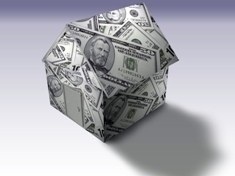 RISMEDIA, April 25, 2009-This year, the federal government extended and expanded home energy efficiency tax credits through 2010 as part of the broader economic recovery package, and millions of U.S. homeowners appear poised to pursue them, according to a survey released by Johns Manville. More than two-thirds of survey respondents, or 68%, said they were aware of the newly created federal energy efficiency tax credits. Of those homeowners, 46% said they intend to make a home improvement-related purchase that qualifies for an energy efficiency tax credit, including nine percent of homeowners who said they had already done so during the first three months of 2009.
RISMEDIA, April 25, 2009-This year, the federal government extended and expanded home energy efficiency tax credits through 2010 as part of the broader economic recovery package, and millions of U.S. homeowners appear poised to pursue them, according to a survey released by Johns Manville. More than two-thirds of survey respondents, or 68%, said they were aware of the newly created federal energy efficiency tax credits. Of those homeowners, 46% said they intend to make a home improvement-related purchase that qualifies for an energy efficiency tax credit, including nine percent of homeowners who said they had already done so during the first three months of 2009.
The energy efficiency tax credits were created earlier this year by President Obama’s economic recovery package, which sought to encourage consumer spending amid the recession, as well as persuade homeowners to become more energy efficient. The tax credits allow homeowners to claim 30% of the cost of qualified energy efficiency products, up to $1,500, including insulation, windows and doors, roofs, HVAC equipment, and water heaters.
According to the survey, saving money was a primary motivator spurring homeowners to pursue an energy efficiency upgrade. The survey found that 40% of the respondents who were aware of the tax credits cited monthly savings on their utility bills as the key reason for the planned home upgrades, followed by improving the comfort of their home (30%), reducing their carbon footprint (13%), and earning the energy efficiency tax credit (8%).
Despite the interest among many homeowners, 72% of survey respondents said they did not know exactly how to apply for any energy efficiency tax credits or rebates, including those offered by state governments or local utilities. And some respondents indicated the existing tax credits might not be big enough to spur action. A total of 41% of respondents said the tax credit would need to exceed 40% of the product’s purchase price to motivate them to pursue a home energy efficiency upgrade if they weren’t planning one for any other reason. Roughly 32% of respondents said a tax credit of 30% or less was sufficient motivation.
To earn an energy efficiency tax credit, homeowners must save their receipt for a qualified purchase, print a form provided by the product’s manufacturer and then claim the deduction on their federal income tax return.
“This recent survey clearly demonstrates that millions of U.S. homeowners are interested in making purchases that qualify for the newly created energy efficiency tax credits,” said Kateri Callahan, president of the Alliance to Save Energy, a Washington, D.C.-based nonprofit that promotes energy efficiency. “The new tax credits can help homeowners defray the cost of several types of energy efficiency upgrades, making them more affordable at this time of economic strain for many.” “By tightening up their homes with added insulation and caulking and sealing of doors and windows, homeowners will enjoy lower heating and cooling costs, too,” Callahan added.
The U.S. Department of Energy (DOE) estimates that homeowners can save up to 30% on their heating and cooling bills by adding insulation to adequate levels and air sealing their homes. In addition, an estimated 65% of U.S. homes, about 45 million, are under insulated, according to the Harvard School of Public Health.
The survey found that the most popular projects for respondents intending to pursue the tax credit included: energy-efficient windows and doors (19%); a water heater (14%); roofing (14%); insulation (13%); heating, ventilation, or air conditioning (12%); and a solar energy system (8%). A total of 53% of respondents said they did not intend to make a purchase that qualified for the credit.
The survey’s other key findings:
– Roughly six out of 10, or 63% of respondents knew that in addition to the federal energy efficiency tax credit, many states and local utilities offer energy efficiency rebates for certain home improvement-related purchases.
– More than half of responding homeowners (58%) underestimated how much a homeowner can potentially save on monthly heating and cooling costs by adequately caulking, sealing and insulating their home. About 21% of respondents answered correctly, pegging the savings at up to 20% to 30%.
– Homeowners making between $50,000 and $75,000 who were aware of the tax credit were the most likely to pursue an energy efficiency upgrade, with 59% of respondents saying they intend to do so during 2009.
“This is a perfect time for homeowners to make their homes more energy efficient,” said Mark Ziegert, a senior brand manager for Insulation Systems with Johns Manville. “With local and federal tax credits and rebates, the potential savings of lower heating and cooling costs, and product promotions offered by retailers, homeowners should have ample motivation to move ahead in 2009 with energy efficiency projects. If and when energy prices move higher, homeowners will be glad they added insulation and made other improvements. ”
Methodology
The telephone survey of 784 U.S. homeowners was conducted from April 3 – 6 by Opinion Research Corp., a national market research firm, on behalf of Johns Manville. The survey’s sampling error was plus or minus four percentage points.
About Johns Manville
Johns Manville, a Berkshire Hathaway company is a leading manufacturer and marketer of premium-quality products for building insulation, mechanical insulation, commercial roofing, and roof insulation, as well as fibers and nonwovens for commercial, industrial, and residential applications.
For more information, visit www.jm.com.










